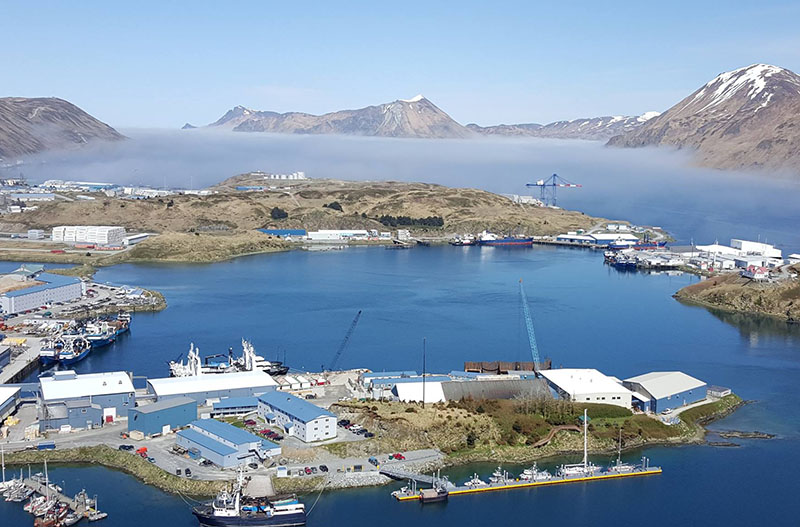Want a fishing license to crew on a salmon boat this summer? Got friends or family visiting who want to wet a line for a prized Alaska catch? Don’t count on it.
If the Alaska legislature continues to defy its constitutional obligation to pass a budget, those opportunities will be lost because there won’t be any state workers to issue fishing licenses. Layoff notices went out on June 1 to thousands of state employees who will be off the job at the July 1 start of the fiscal year.
That’s just one of the lesser impacts of the legislative impasse, hundreds of which are now being outlined by the governor and state agencies as the deadline approaches.
Here’s an overview of potential fishery related impacts from various divisions:
The Commercial Fisheries Division, which receives nearly all its management money from the state general fund, will be hit the hardest. The budget deadlock would bring all state fisheries to a screeching halt, and thousands of processing workers who live in or come to Alaska each summer would suddenly find themselves out of a job.
The biggest punch, of course, would be felt by the salmon fisheries — and the harm could extend well beyond this year.
Field staff at remote weirs, towers and salmon sonar counting projects from Southeast to Kotzebue will be pulled, said Scott Kelley, division director with the Alaska Dept. of Fish and Game.
“A ballpark count is 40-50 projects for commercial fisheries. That doesn’t include projects operated by Sport Fish which are oftentimes equally important for overall salmon assessment, as well as aerial and foot surveys,” he said.
The stall means that managers’ ability to forecast future salmon escapement goals and collect other critical data also would be significantly compromised.
Cancelled harvests also could force too many salmon to head upstream and exceed the carrying capacity of food and oxygen in their home lakes or streams.
“That entirely depends on the strength of a given run,” Kelley explained. “In rearing limited systems, where the more spawners we put in the more fry we get, we could see significant impacts in terms of future yields. If we put a big number of sockeye into a system above the upper end of an escapement goal, the result could be reduced yield when that brood year returns over 3 to 5 years. If there are more fry than feed, they could have reduced in-lake survival, reduced marine survival because they leave freshwater smaller and less fit than normal. Prey densities also take a hit and take a while to recover.”
“This is not a conservation issue, but can be a yield issue,” Kelley added.
Insufficient sampling also could hinder assessment of the state’s performance for Pacific Salmon Treaty obligations with Canada, ADF&G’s ability to manage allocations set by the North Pacific Fishery Management Council and the International Pacific Halibut Commission’s stock assessment program.
A shutdown will threaten annual production of 4.5 million salmon, rainbow trout and Arctic char at Alaska’s two state-owned hatcheries, and prevent the collection of king and silver broodstock. It could take up to four years to rebuild that mature stock needed to sustain future generations.
The Dept. of Fish and Game’s three patrol vessels and skiffs will be tied up.
Also halted effective July 2 would be issuance of Title 16 land and water use permits by the Division of Habitat that protect fish and wildlife areas. Similarly, the Dept. of Natural resources will be forced to delay issuing various permits and authorizations.
Say so long to subsistence harvest surveys done by the Division of Subsistence, and support to the Board of Fisheries and advisory committees. The issuance of subsistence and drawing permits could be delayed, interrupted or even not issued.
The budget impasse would delay or prevent fish cargo shipments. The Dept. of Transportation will tie up all 11state ferries, meaning no passenger service and no fish transports to awaiting mainland customers. Likewise, many state airports will operate with reduced hours, preventing fish from getting delivered to buyers in a timely manner.
Core services by the Dept. of Environmental Conservation will be suspended, including testing for shellfish paralytic shellfish poison, air and water monitoring and permitting and inspections.
In a June 9 press release ADF&G Commissioner Sam Cotten said that the department is working with the Office of Management and Budget and the Department of Law to analyze the impacts of a shutdown on the commercial, subsistence, personal use and sport fisheries, as well as hunting seasons.
Cotten said the programs and services at ADF&G will continue on their normal course through the month of June.







